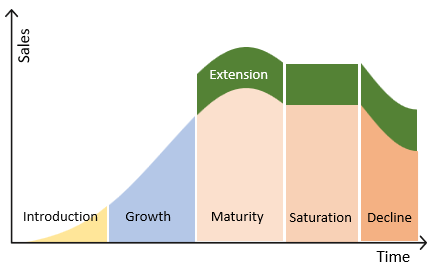AS Business Studies 9609
Business Studies – 3.3 The Marketing Mix
- The marketing mix – Product, Price, Place and Promotion (4p’s)
- Importance of Product Differentiation and USP
- Product Portfolio Analysis (Bostom Matrix and Product Life Cycle)
- Pricing methods – Competitive, Penetration, Skimming etc…
- Promotional methods – Direct and Indirect
- Place – Distribution channels including digital distribution
The Marketing Mix Elements
Remember the Marketing Mix is Dynamic
Businesses will need to make decisions for each element of the marketing mix. It’s important to remember that these decisions will depend on many factors. For example, the stage of the product life cycle will have a direct impact on the marketing mix decisions

The marketing mix consists of four elements which are, product, place, price and promotion. A business will use the marketing mix to coordinate all the activities to sell (goods) products or services. (At GCSE business you only need to remember the four P’s of the marketing mix).
Other factors to consider in making marketing mix decisions include market research, competition, and business objectives.
Pricing methods
Cost-plus Pricing is simply when a business adds the profit they would like to make based on the cost of making the product.
Competitive Pricing is when a business sets prices to match competitors or slightly below if they want to gain additional market share. This strategy can help a business avoid a price war.
Penetration Pricing is when a business sets prices lower than competitors to enter a new market.
Price Skimming is done by setting a high price, usually for a new product with demand. Mobile phone manufacturers are well known for this method of pricing when they launch the latest mobile phone.
Promotional Pricing is used to sell a product or service at a low price for a limited time.
Dynamic Pricing is used to charge different prices based on the level of demand. Airlines use dynamic pricing to charge different prices for booking a flight based on the number of seats booked. Customers taking the same flight can pay different prices based on when they booked the ticket.
.
.
.
.
.
.
.
Product Life Cycle Extensions
Extension strategies are designed to extend the length of time a product’s life cycle will last. This can be done by lowering prices, advertising, enhancing the product, re-packaging and repositioning the product into a different market segment. It’s best to implement extensions during the maturity stage.
Product Life Cycle
1. Introduction stage
The product is launched and introduced into the market. Sales figures are small and only grow slightly as the product needs to become known.
2. Growth stage
During the growth stage, the sales outweigh the costs. Some additional marketing may be required due to copycats. Customers are starting to become aware of the product, and sales are growing. Businesses will attempt to prolong the ‘Growth’ stage to gain market share.
3. Maturity
Sales are increasing more gradually during the maturity stage of the life cycle. This slowdown in sales is usually due to the increased amount of competition as other businesses will attempt to sell and complete within the same market. It is recommended to increase advertising during this stage to maintain profits or market share.

4. Saturation
The saturation point is where sales have reached the highest point of the life cycle. Competition is usually fierce during this stage but it’s unlikely for new competitors to come into the market. Profits can decline during this stage as more spending on marketing is required to maintain sales. It is often during the saturation stage that businesses will cut prices to try and maintain sales.
5. Decline
Sales decline as newer products are available. Customers will buy a newer product instead, this is usually where a business will consider replacing the product with a new one or removing the product from the market. During this stage spending on marketing is not likely to help as prices have already been lowered. The business must already launch a new product or else the business will have no sales until a new product can be introduced to the market.
Definition of the Product Life Cycle
The Product Life cycle describes the stages a product will go through, starting with the introduction, growth, maturity, saturation and finally decline. Each stage is based on the sales of the product. Different products will have different lengths of time for each stage of their life cycle. PlayStation has on average a five-year life cycle.
Section A 3.3 Marketing Mix Practice for Paper One
Section B 3.3 Marketing Mix Practice for Paper One
Students are also Interested in:
Revision Videos

Digital Marketing Analytics
11 sections • 28 lecture • 19h 33m total length

Marketing in a Digital World
11 sections • 28 lecture • 19h 33m total length

Marketing Analytics in Theory
11 sections • 28 lecture • 19h 33m total length

Range of Business Topics
Lorem ipsum dolor sit amet, consectetur adipiscing elit.

Expert Teacher
Lorem ipsum dolor sit amet, consectetur adipiscing elit.

Unlimited Access
Lorem ipsum dolor sit amet, consectetur adipiscing elit.
Get Additional Business Studies Resources!
Get access to additional business studies resources including sample questions and detailed examination feedback.
